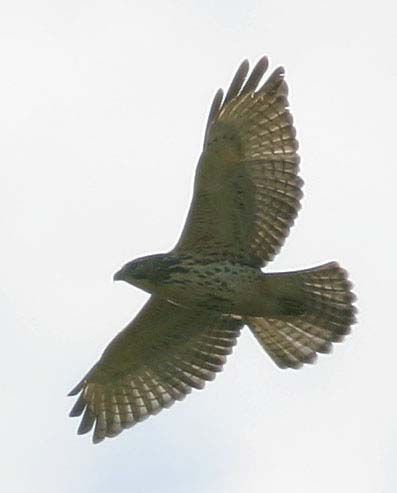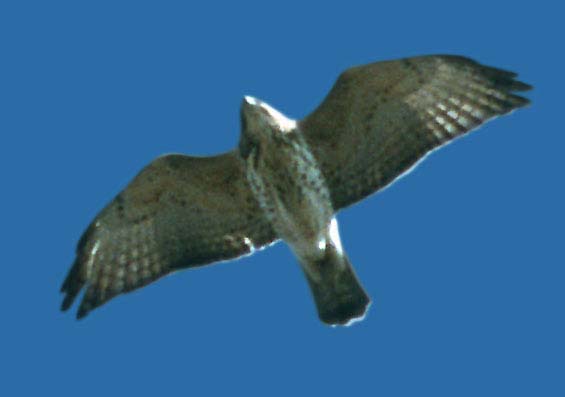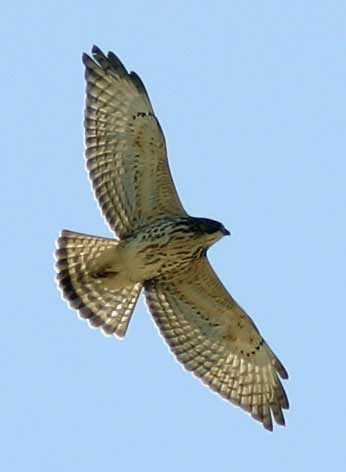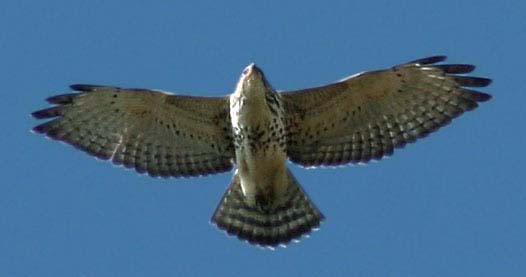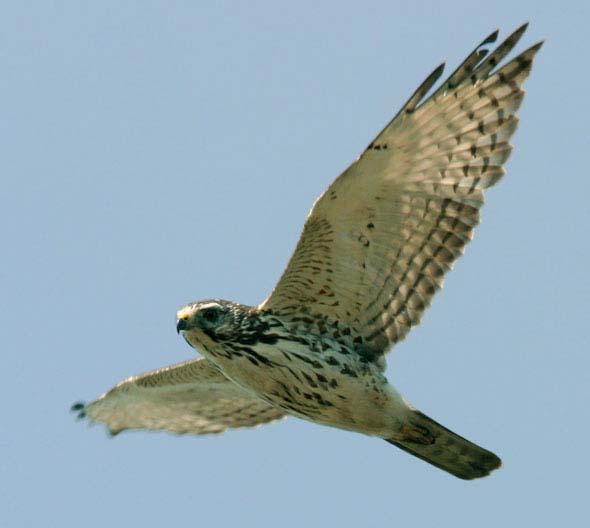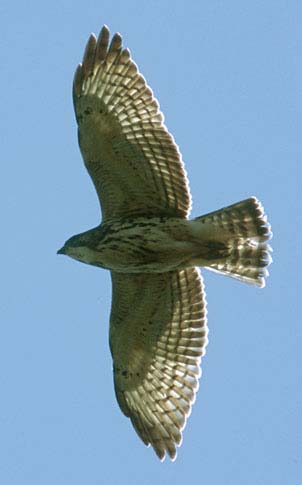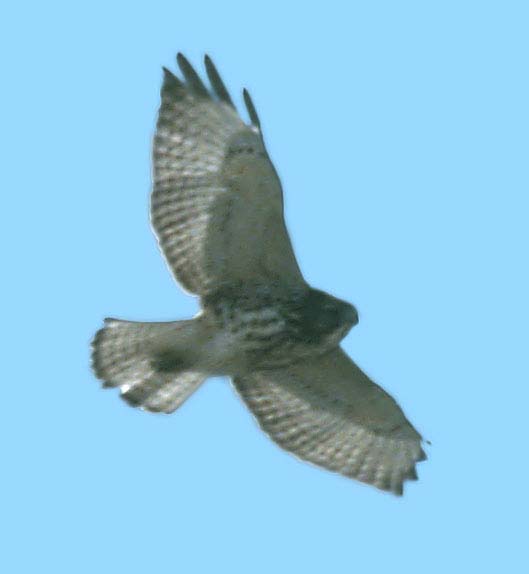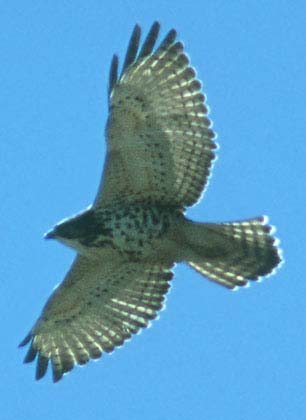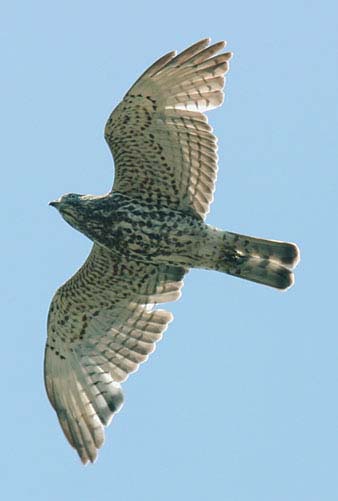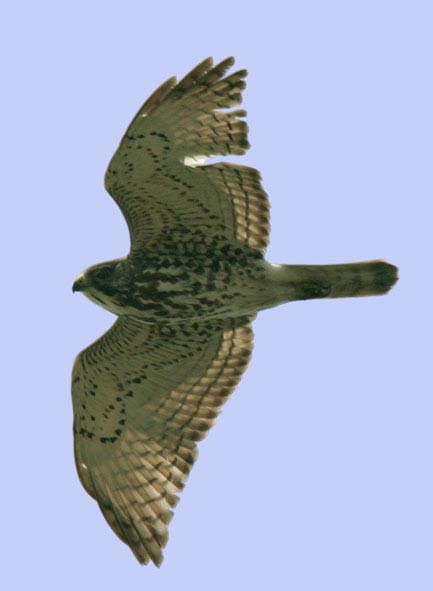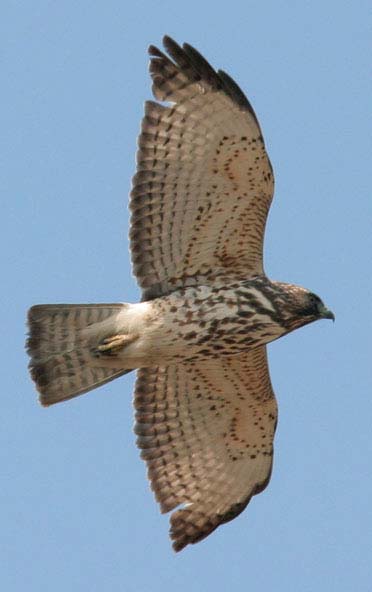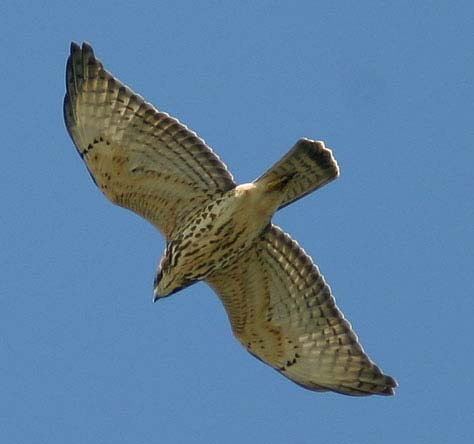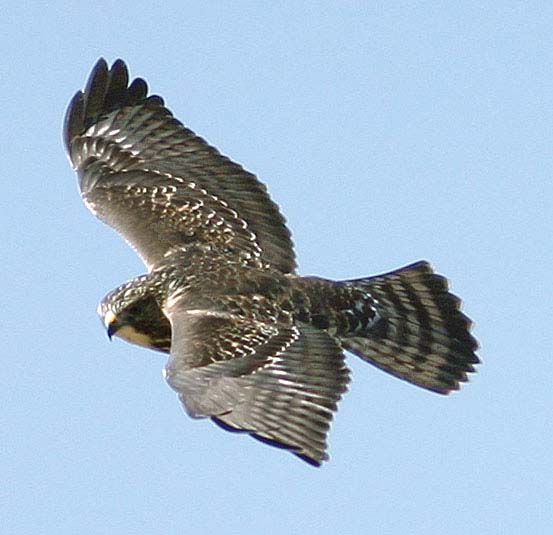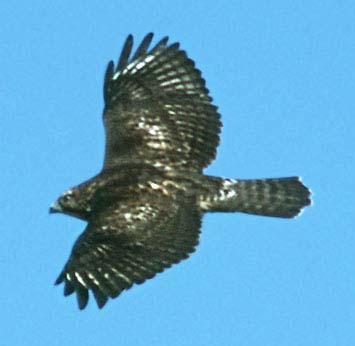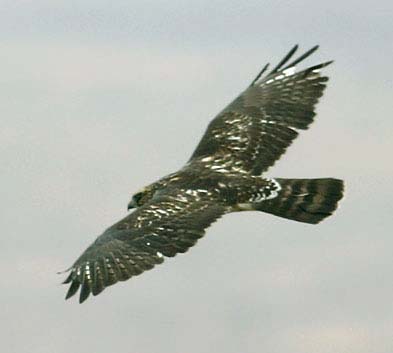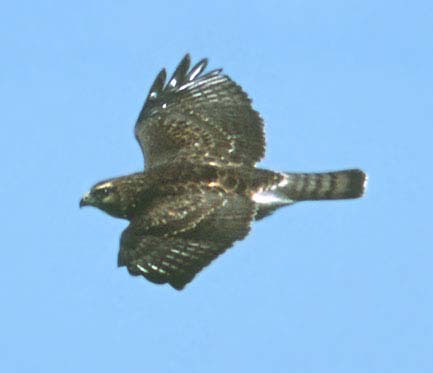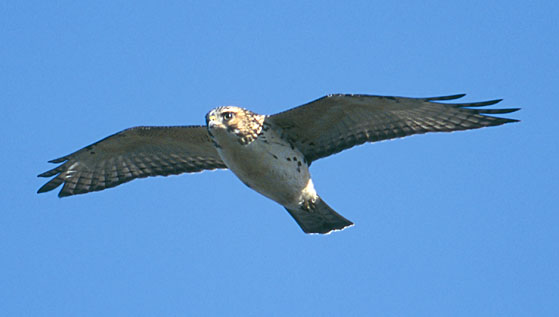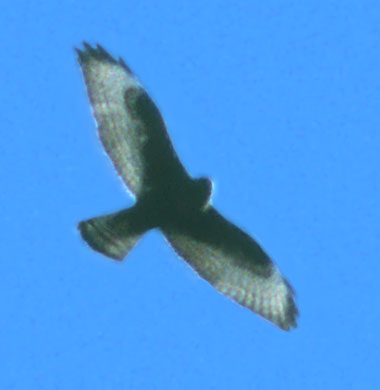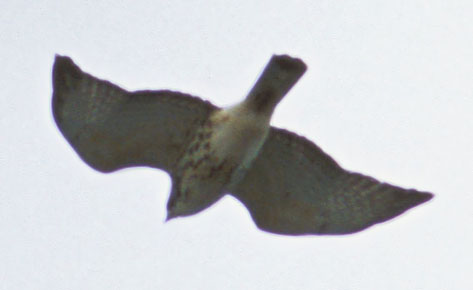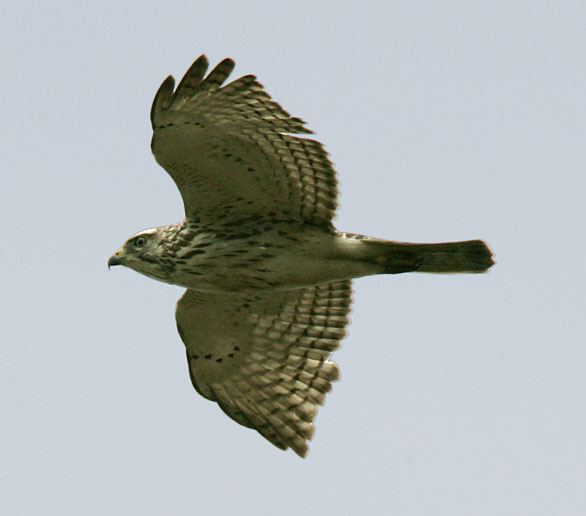|
The Juvenile Broad-winged Hawk |
|
By Jerry Liguori (Some content is taken from "Hawks From Every Angle" by permission of the author). Juvenile Broad-winged Hawks are pale underneath with dark streaking that is typically limited to the sides of the breast. However, the streaking is variable and can be almost non-existent (17) to very heavy (9, 10). Be aware that some juveniles appear barred underneath similar to adults (9, 10). The underwing coverts of juveniles are essentially unmarked, and the underside of the tail has faint, narrow bands with a wide, dark sub-terminal band, which is typically the only band visible in the field. Juveniles lack the dark trailing edge to the wing and the distinctly banded tail that adults show. Dark morphs are solid brown (18), or heavily streaked throughout the body and underwing coverts. The pattern to the flight feathers (includes tail feathers) on dark birds is identical to that of light birds. The topside of juvenile Broad-winged Hawks is very similar to those of Red-tailed Hawks but the primary wing panels are typically less distinct (13-16). Dark birds are slightly darker overall and less mottled than light birds but nearly impossible to tell from light birds in the field from above. I have seen more than one juvenile Broad-winged Hawk with a distinct bellyband similar to Red-tailed Hawks (4,5,6), but they will not show dark patagial bars. Also, many species of buteo can exhibit pale heads, pale eye-lines, pale mottling along the upperwing coverts, or dark wrist ‘commas.’ These field marks should never be used alone to identify buteos. Juveniles in spring often have paler heads than usual due to fading.Shape is often the most reliable trait when identifying juvenile Broad-winged Hawks in the field! Broad-winged Hawks possess shorter wings than Red-tailed Hawks and lack a bulge along the trailing edge. The wingtips of Broad-winged Hawks are always pointed, even in a full soar. Be careful, the pointed wings can make them appear similar to falcons, Swainson’s Hawks, or goshawks from certain angles. Broad-winged Hawks have stocky bodies and heads. The tails of Broad-winged Hawks are often square-tipped but sometimes rounded when folded and particularly narrow compared to other buteos, almost resembling that of an accipiter (5, 10, 14, 16). The tail shape of Broad-winged Hawks is an excellent trait for distinguishing them from other buteos when high overhead. Approaching at eye level Broad-winged Hawks hold their wings fairly flat with a slight droop at the hands. Broad-winged Hawks exhibit shorter wings than other buteos, making them more similar in shape to accipiters but they show very broad bodies at eye level. In a glide, Broad-winged Hawks show stocky wings with the primaries projecting past the base of the wings only slightly. The trailing edge of the wings is straight-cut, lacking a significant bulge. Broad-winged Hawks flap in a quick, shallow manner that is more similar to accipiters than to other buteos. Compared to accipiters, the wing beats of Broad-winged Hawks are stiff and shallow, or ‘choppy’. Broad-winged Hawks soar on flat wings. At low altitudes, Broad-winged Hawks soar in relatively tight circles compared to larger buteos. Broad-winged Hawks are very steady fliers. Only in extremely high winds will Broad-winged Hawks become somewhat unstable, often flapping in a hurried manner to adjust their position.
All photos are by Jerry Liguori ©Jerry Liguori
except 5, 9 and 10 which are by Michael Shupe |
|
Photos by Jerry Liguori ©Jerry Liguori, Michael Shupe ©Michael Shupe (5, 9, 10) and Jim Zipp ©Jim Zipp. (17) |
